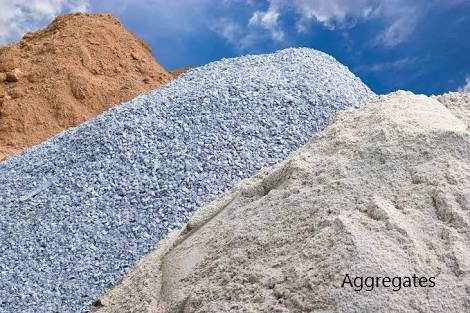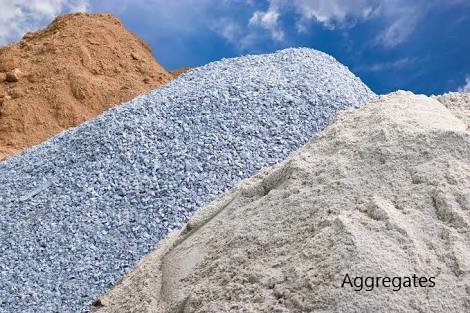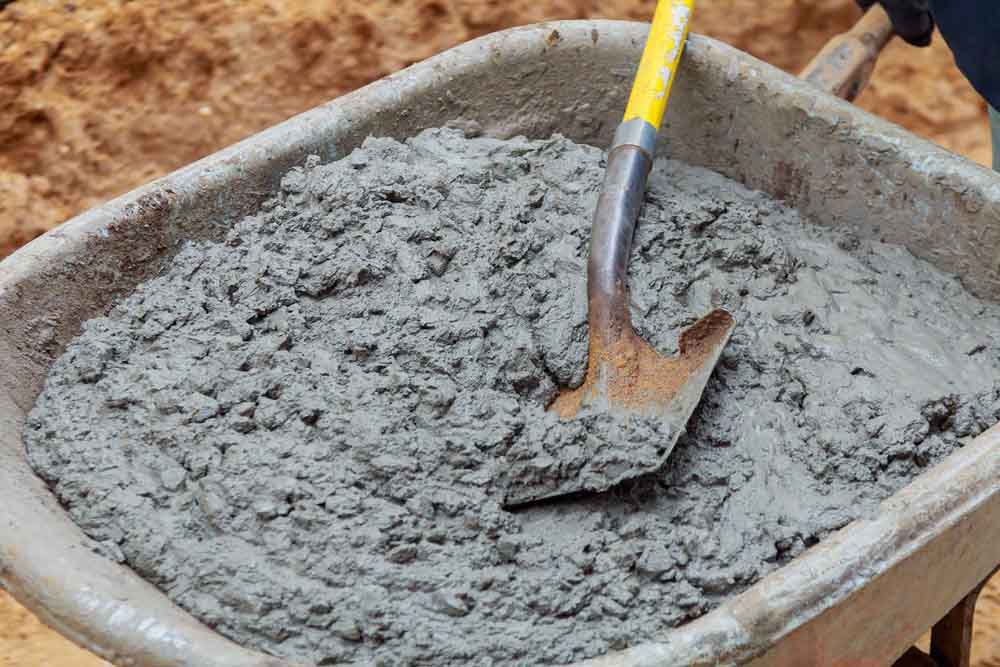Civil engineers and project managers must be aware of the factors that affect the composition of the concrete mix to make the right decision.
Generally, concrete mix projects are linked to construction, and the approval process is also linked to the construction site team. Therefore, not only the design team but also the construction team must be aware of the factors that affect the concrete mix design.
Let’s see what concrete mix design is…
What is concrete mix design?
Concrete mix design is the specification of concrete mix proposals, including the type of additives used, concrete slump, etc.
There is a clear indication of what quantity needs to be used for each type of material.
Let's discuss the factors that affect the concrete mix design process.
Factors Affecting Concrete Mix
Let us discuss in detail each factor that needs to be considered when mixing concrete.
Here we discuss materials such as cement, water, aggregates, additives, etc.


Compressive strength
It is also known as concrete grade.
We use concrete with certain compressive strength for construction. In general, the compressive strength or characteristic strength of concrete is determined by the designer.
We ensure that the concrete mix has the specified compressive strength. After the contractor submits the concrete mix design, we check the mix proportions.
If they are acceptable, we move on to test mixes. On this occasion we will review them Compressive strength of concrete. This strength we test is called target strength and is greater than the compressive strength of concrete.
And the target strength is specified in the concrete mix. This check is recommended for all new concrete at the beginning of the project because compressive strength is one of the main factors affecting the concrete mix.
The article on the main factors affecting the Compressive Strength of Concrete More information on factors related to the development of concrete strength can be found here.
Concrete workability
The workability of concrete or the way in which concrete can be processed is the parameter that determines the ease of handling of concrete.
Concrete Compaction, segregation, etc. These are some of the important aspects related to the workability of concrete.
The article All About Concrete Workability For more information on this title, see.
Concrete durability
A very important factor that must be taken into account when designing the mix, as when selecting the mixing proportions we must take into account factors related to the durability of the concrete.
The most appropriate code is BS 8500 Part 1 and Part 2 ( newer versions – BS 8500-1:2015+A1:2016 and BS 8500-2:2015+A1:2016 ) when designed to British standards.
Depending on the exposure class in relation to environmental conditions, the quality of the concrete, the water-cement ratio, the minimum cement content, etc. They are evaluated taking into account the expected useful life (50 years or 100 years).
For more information about the other factors that affect the durability of concrete, see the Concrete Durability article.
Additionally, the Shelf Life Requirements article also provides instructions for this.
Water-cement ratio
The water-cement ratio is the first parameter we use when preparing the concrete mix. This is the most important of all factors that affect concrete mixing.
The lower the water-cement ratio, the higher the strength of the concrete because the cement content increases compared to the water content.
The quality class of concrete is always indicated by the water-cement value.
Aggregates
No concrete is created without aggregates.
We always use aggregates for concrete. This is because the volume cannot be achieved with cement alone. They are used to increase volume and at the same time reduce concrete shrinkage.


The following factors are taken into consideration or influence the concrete recipe.
- Classification
We must ensure that the aggregates used in concrete have the permitted particle size. Depending on the standard, there are requirements regarding the size of the aggregates.
This is defined based on the percentage of sleeve penetration.
Therefore, it is essential that the grain size and particle size distribution are checked below.
-
- Fine aggregate – sand
- Find Aggregate – Manufactured sand, if used.
- Coarse aggregates
In this way we define the composition of the aggregates. We also select the aggregate size at the beginning before proceeding with any of the above checks.
In accordance with BS 8500, the following maximum aggregate sizes will be used in construction.
-
- 10mm
- 14mm
- 20mm
- ≥ 40mm
- Additionally, aggregate strength and moisture content (if used in concrete) affect the compressive strength of concrete.
Water
Water is the main component we use to mix concrete and it helps combine all the mixing additives for ready-mixed concrete .
As mentioned earlier, the amount of water added to the mix is the crucial factor that affects the strength of concrete. Therefore, we need to control the water-cement ratio in a concrete mix.


Let's talk about water quality and how we can ensure it is suitable for use.
Before using water to mix concrete, some tests must be carried out.
- pH value of water
- Chloride content
- Sulfate content
- Fully suspended soils
- Total amount of substances dissolved in the soil
- Carbonate content
- Bicarbonate content
- nitrate
- phosphate
Other tests may also be performed. The above chemical compositions need to be checked to ensure they are within limits.
The following table shows the test method and acceptable ranges. Furthermore, the same test can be performed according to different standards applicable to each project/country.
| parameter | Test method | Maximum | units | Standard for maximum limit |
| pH value at 22.3 Ó C | ASTM D 1293-99 | ≥ 4 | EN 1008:2002 standard | |
| Chloride (Cl – ) Content | ASTM D512-04 | 500 – prestressed concrete
1000 – reinforced concrete 4500 – mass concrete |
mg/l | EN 1008:2002 standard |
| Sulfate (SO 4 2- ) | ASTM D 616-07 | 2000 | mg/l | EN 1008:2002 standard |
| Phosphate (as P 2 Ó 6 ) | APHA-4500-PE | 100 | mg/l | EN 1008:2002 standard |
| Nitrate (as NO3) | APHA 4500-NO 3 – -B | 500 | mg/l | EN 1008:2002 standard |
| Total amount of suspended solids | APHA-2540-D | Undefined | mg/l | EN 1008:2002 standard |
| Total dissolved solids | APHA-2540-C | 2000 | mg/l | BS 3148:1980 Standard |
| Carbonate (CO32-) | USGS-06 Method | 1000 | mg/l | BS 3148:1980 Standard |
| Bicarbonate (HCO3- | USGS-06 Method | 1000 | mg/l | BS 3148:1980 Standard |
cement
If we don't talk about cement, our knowledge of the factors that affect the composition of the concrete mix is incomplete.
Cement is a material used mainly in construction.
It reacts with water and forms a strong bond.
In addition to the cement content, cement also directly influences the composition of the mixture.
The two main factors to consider in this discussion are the type of cement and the strength of the cement.
There are several classifications discussed in articles, Cement and cement additives and Classification of cement For more information you can contact us.
Element Sizes
The increase in concrete temperature during the hydration process is one of the biggest problems we face when pouring a large amount of concrete for an element.
This is basically because as the size of the element increases, we need to pay attention to the concrete mix, as the size of the elements is among the factors that affect the concrete mix.
When designing the mixture, care must be taken to reduce the heat of hydration.
We could introduce material such as fly ash to the concrete to reduce the heat generated during the hydration process.
In addition, other techniques can also be used, such as: For example, cooling the aggregates, using cold water to mix the concrete, concreting at night, installing pipes in the concrete to circulate water, etc.
The article's method for limiting Concrete Temperature and Initial Concrete Temperature For more information about this, you can refer to this page.
Type of structure
The type of structure or intended use has a direct impact on the concrete mix. Some of the important factors are highlighted here.
- Water retention structure
The concrete used in the water retention structure must have low permeability and low heat generation.
The chosen mixture must be made in accordance with the chosen composition. As recommended in BS 8007, grade 35A concrete can be used in structures to contain fluids.
- To load
If there is a risk of rapid wear of the concrete surface, better concrete can be used.
Increase the coverage of the reinforcement, use higher quality concrete, etc. They serve to minimize wear and protect the structure.
They can usually be observed in parking lots, spillways, etc.
Additions
Additives are a clever invention in concrete construction because they have now become one of the main components of concrete.
The dosage of the additive must correspond to the information provided by the supplier. Overdosing should not occur, as it will affect the properties of the concrete. It can even lead to a reduction in the strength of the concrete.


Nowadays we use Agent flow decreases as water temperature increases. They help reduce water content. When the water content decreases compared to the cement content, it leads to a reduction in the water-cement ratio.
By reducing the water-cement ratio, the strength of concrete increases.
With this in mind, the cement content can be reduced to achieve the same strength while keeping the water-cement ratio unchanged by adding a highly effective water reducer. This could simplify the mixed design and provide a cost advantage.
Likewise, there are other factors that affect the concrete mix. For example, think of concrete with a rapid increase in strength. We need to change the concrete mix so that it hardens quickly. This could even be achieved with additives.

